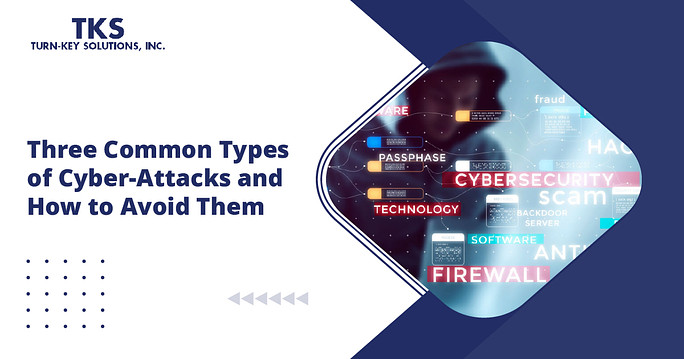Cyberattacks, malicious acts against a computing device, often referred to as hacks, have often made headlines in recent years. You certainly remember that of 2017, named WanaCry, which affected large companies such as FedEx and Renault. That same year, Netflix was also the victim of a cyberattack.
The idea is not to panic but only to make you aware that even the biggest companies can be victims of cybercriminals.
In this article, we suggest you learn more about the three most common types of cyberattacks and the means to implement them to avoid them.
Phishing
If you’ve been following the saga about Russian interference in the last US presidential election in 2016, then you may know that a “rigged” email using Gmail codes is behind this mess.
Phishing is certainly the most widespread cyberattack on the web. It is a phishing technique that consists in usurping the identity of a trusted person or company to collect personal information (bank identifiers, passwords, etc.).
Most of the time, and this is what happened in the history of Russian interference; an email was sent to you asking you to click on a link.
While you think you are being redirected to the site of the structure in question, you are actually diverted to a site created identically by cyber criminals. You are then asked to enter certain information, and this is when it is collected and then exploited by the “hackers.”
This cyberattack is not directly related to a security breach in your computer system. On the contrary, it exploits your lack of attention.
Pay attention to the emails (even SMS) you receive:
- Try to identify spelling mistakes or poor-quality visuals
- Check the structure of the email address
- Do not click directly on the link, but enter it manually in your search bar
- Before entering confidential data, make sure that the link URL begins with “https”
- Contact the organization that seems to have been usurped to remove any doubt about the message received
Warning: Be aware that most organizations never ask their customers to enter confidential information by email or SMS.
The Man in the Middle Attack (MITM)
This cyberattack translates to “man-in-the-middle” (HDM) and can take various forms. Most of the time, a hacker manages to position himself between a client and a server to intercept the data exchanged.
In a more concrete example, the attack could take place when you (the client) fill in the information on the site of your bank (the server). The HDM recovers your data and then uses it without your knowledge.
Typically, MITM cyberattacks take place when you connect to a compromised public Wi-Fi network. By usurping the latter, the cybercriminal can spy on all your actions on the web and easily recover your passwords your credit card number, and even see your exchanges by SMS, on Facebook, etc.
The best prevention against a Man in the Middle attack remains the use of a VPN, which encrypts your data, making it incomprehensible to hackers.
Also, avoid connecting to public networks to make purchases, connect to your bank’s website or do anything else that requires you to enter or communicate sensitive data.
Malware
Malware, a contraction of “malicious” and “software,” is a malicious program that installs itself on your computer or any other device.
Among the most widespread malware are viruses, ransomware, which holds your personal data for ransom, or crypto-jacking, which uses computer resources to secretly mine cryptocurrency.
Malware is the “easiest” cyber threat to avoid because it involves device security. To protect yourself, you should install firewalls and antivirus software.
Another way to guard against this kind of cyberattack is to keep your operating system up to date. This allows your device to install necessary fixes for security vulnerabilities.
Note that the appearance of a toolbar that you did not install, a sudden drop in the performance of your device, or constant pop-ups should alert you. These are signs that you are infected with malware.
Turn-Key Solutions (TKS) provides its clients with the best IT services in Alabama, like data backup solutions and document management services.

